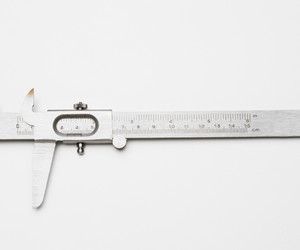Accuracy

– The accuracy of an instrument is a measure of how close the output reading of the instrument is to the true value.
– For analog instruments the accuracy is often stated as a percentage of the full scale deflection (FSD).
– For an analog voltmeter with FSD of 10 V, an accuracy of ±5% means that there is a possible error of ±0.5 V at all points on the scale. When the pointer indicates 4.8 V, the actual measured voltage must be regarded as 4.8 V ± 0.5 V.
– For digital instruments the accuracy is stated as ± (% of reading) ± 1 digit, where 1 digit refers to a 1 in the right hand numerical position of the display.
For a digital voltmeter with 8.135 V on display, an accuracy of ± (0.5% of reading) ± 1 digit means that there is a maximum error of ± [(0.5% of 8.135) + 0.001] V = ± 42 mV
Precision

– Precision refers to the closeness of successive measurements.
– If a large number of readings are taken of the same quantity by a high-precision instrument, then the spread of readings will be very small.
– Precision is often confused with accuracy. In the presence of systematic errors high precision does not imply anything about measurement accuracy. However, in the absence of systematic errors high precision work results in accurate measurement.
– Precision is also confused with resolution. Two instruments having same resolution may have different precision.
Resolution

– It is the smallest change in measured quantity that can be observed.
– One of the major factors influencing the resolution of an instrument is how finely its output scale is divided into subdivisions.
– Consider the digital voltmeter indication shown. For the 8.135 V indicated, the last (right-side) numeral refers to millivolts. If the measured quantity increases or decreases by 1 mV, the reading becomes 8.136 V or 8.134 V, respectively. So, 1 mV is the resolution of digital voltmeter.
– For the analog voltmeter scale, the pointer position can be read to within (perhaps) one-fourth of the smallest scale division. Since the smallest scale division represents 0.2 V, one-fourth of the scale division is 50 mV. So 50 mV is the resolution of the analog voltmeter.



